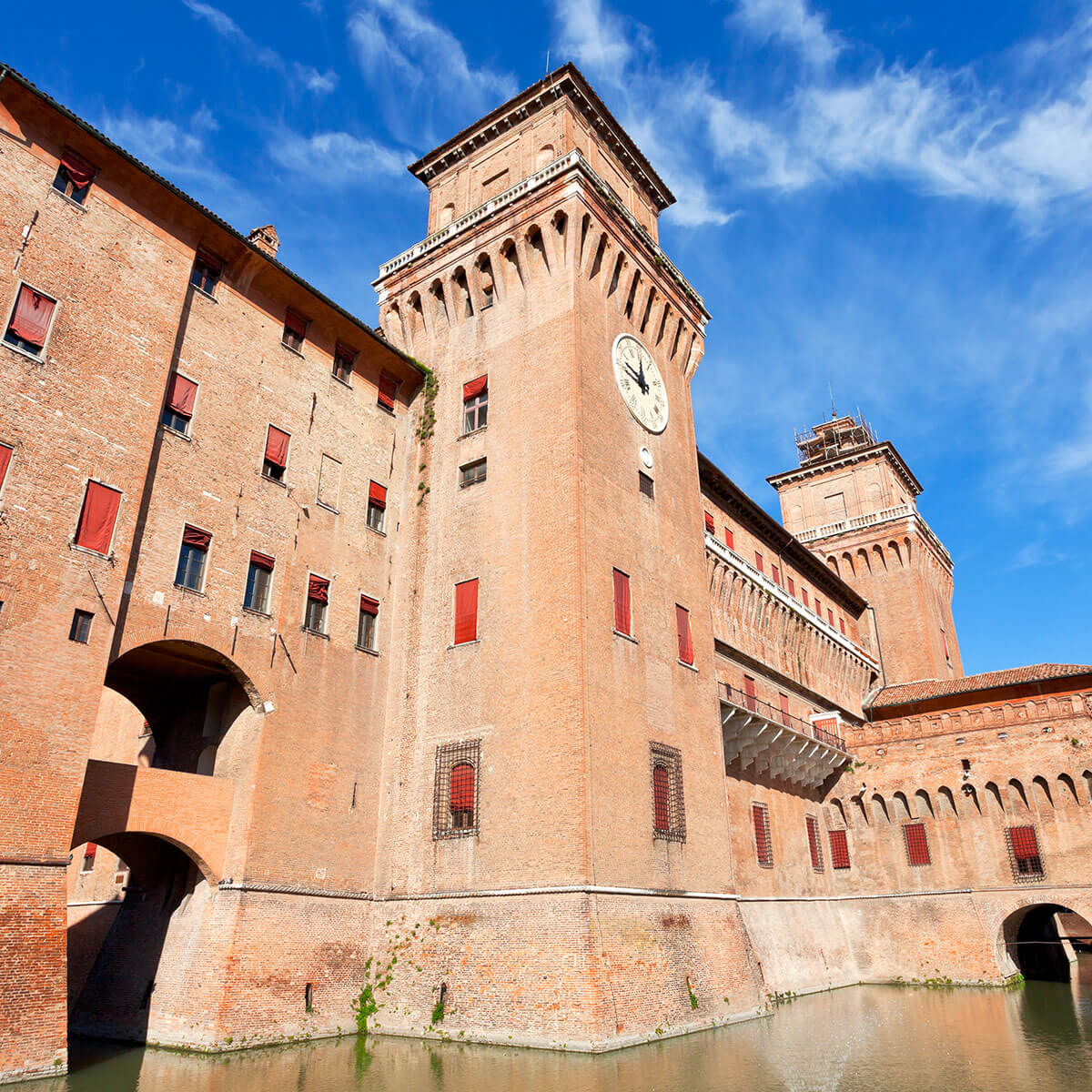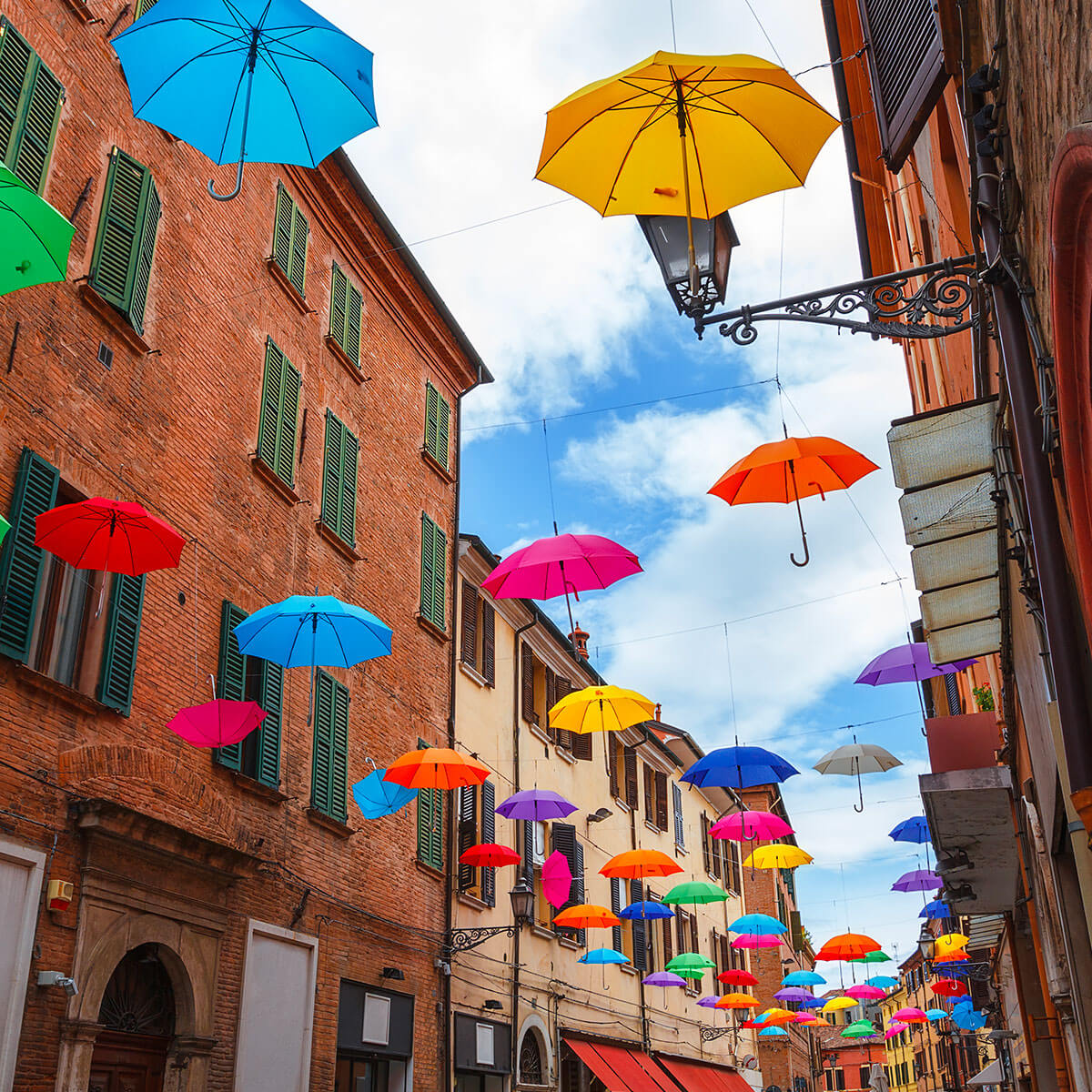Single Deluxe room
Single Deluxe room with single bed, furnished with taste and attention to detail ideal for those who, for business or pleasure, ...
Read moreIn 1995, the historic centre of Ferrara was declared a UNESCO World Heritage Site as an example of a city that has preserved its historical and artistic beauty over time. Its origins remain shrouded in mystery...
Bus To get from the Hotel Lucrezia Borgia to the historic center of Ferrara, you can use line 11. With line 11-A you can go to the historic center from the "Centro Commerciale il ...
Read moreEste Castle Conceived as a medieval fortress, then became a government residence in the Renaissance of the Este Court, in the twentieth century elevated to an emblem by the metaphysical painting of...
Read moreLegend has it that Ferrara was a Trojan maiden who escaped the ruin of her homeland and founded a new city. Mythology links its origins to the point where Phaeton fell struck by a thunderbolt from Jupiter after a ruinous race at the wheel of Apollo's chariot.
The first reliable document in which Ferrara is mentioned is the diploma issued by the Lombard king Astolfo in 753 A.D., which attests to his dominion over the city. At the end of the Longobard period Ferrara was ceded to the Church of Rome and then became a fief of the Canossa family until the early 1100s, when the first signs of autonomy appeared, leading to the birth of the free municipality. This period was marked by continuous and bloody battles between the Salinguerra and Adelardi families, who fought for the city government. It was the Adelardi who brought the Este family from the town of the same name, who, in 1242, after long battles and thanks to a large landed estate, assumed absolute power over Ferrara.
This marked the beginning of a golden age for the city and its population that lasted over three centuries; under the rule of the Este family, Ferrara became one of the most refined cultural centres of the Italian Renaissance. The credit for this rebirth goes to Marquis Leonello, who surrounded himself with artists, men of letters and musicians, creating a refined circle of intellectuals at court.
His brother Borso is remembered for the land reclamation works undertaken in the surrounding territory, for the artistic commission of one of the most beautiful profane pictorial cycles which can still be admired today in Palazzo Schifanoia, for the sumptuous hunting parties, the lavish banquets and for the title of Duke of which he was awarded by Pope Paul II, only shortly before his death. Duke Ercole I promoted theater and chivalric literature and commissioned the imposing and innovative urban project known as the "Addizione Erculea". Alfonso I strengthened the defensive walls of the city while Ercole II ordered the restructuring of the castle after the earthquake of 1570. Unfortunately the magnificence of the Court, the shrewd matrimonial policy and the wars fought in defense of their territories were not enough to make the Duchy survive. In 1598 the glorious Este dominion in Ferrara came to an end when Alfonso II died without leaving direct heirs and Pope Clement VIII reunified the Duchy of Ferrara to the State of the Church (Devolution).
It began the period of pontifical domination during which Ferrara witnessed a slow decline that was recorded not only at the artistic level, but also commercial, agricultural and demographic, with the painful creation of the Jewish ghetto. During the period of Napoleon's domination many religious orders were suppressed and most of the artistic patrimony collected by the Este family left the city never to return. The revolutionary movements led to the expulsion of the papal government and to the annexation of Ferrara to the Unitary State in 1860. At the First World War Ferrara participated with a large number of laborers, with the promise of the acquisition of new arable land at the end of the conflict. The huge losses prevented, however, to keep the promise and this "betrayal" had as a consequence a wide adhesion to Fascism. During the second world conflict the town suffered serious wounds under the aerial bombardments, the forces of the resistance paid a high contribution of blood, the ferraresi Jews were deported in the concentration camps and very few made return.
Today, after the hard journey of reconstruction and economic recovery, Ferrara can boast a high quality of life given by a lively reality full of beautiful art exhibitions, a refined concert season, various sporting and cultural events including the Palio of Ferrara, which historical documentation identifies as the oldest in Italy, the first international festival of street musicians (Buskers Festival) and the Balloons Festival.
Ferrara can boast a lively reality full of splendid art exhibitions, a refined concert season, various cultural events and much more. Find and book your experiences in Ferrara now.
Find experiences in FerraraAre you looking for comfortable rooms to sleep in Ferrara? The suites at Hotel Lucrezia Borgia are all personalised in their details and fine fabrics.
Single Deluxe room with single bed, furnished with taste and attention to detail ideal for those who, for business or pleasure, ...
Read moreRoom with French bed 140X190, classically furnished but comfortable with warm wooden floor. Ideal for single travellers or ...
Read moreSuitable for two guests, our Standard Twin Rooms are air-conditioned and feature a flat-screen TV, safe, desk and free Wi-Fi. The ...
Read moreThe Deluxe Twin room, with its impeccable design, is a synthesis of class and elegance. This room type offers two XL single ...
Read moreSuitable for two guests, our Standard Double rooms are equipped with air conditioning, a flat-screen TV, safe, desk and free ...
Read moreThe Deluxe Double room, with its impeccable design, is a synthesis of class and elegance. This room type offers a king-size ...
Read moreSuitable for three guests, our Triple rooms with standard single beds or with a double bed and a third bed are equipped with air ...
Read more
We and selected third parties use cookies or similar technologies for technical purposes and, with your consent,
also for other purposes as specified in the .
If you close this banner with a tick or click on "Decline", only technical cookies will be used. If you want to select the
cookies to be installed, click on 'Customise'. If you prefer, you can consent to the use of all cookies, including
cookies other than technical cookies, by clicking on "Accept all". You can change your choice at any time.

